#colugo
Text
yes, I know, not on blog theme, but we're a bunch of dino lovers so I wanted to see what we thought was weird in mammals
#not dinosaurs#mammals#weirdest mammals#poll#nature#animals#humans#babirusa#narwhal#platypus#koala#colugo#hammer-headed bat#naked mole rat#saiga#sloth
2K notes
·
View notes
Video
Colugo/ Weird, fascinating animals
Source
More
3K notes
·
View notes
Text
The Colugo: these mammals are able to glide through the air using a fur-covered membrane that stretches across their bodies; as a baby, a colugo that has not yet learned how to glide on its own must cling to its mother's belly instead
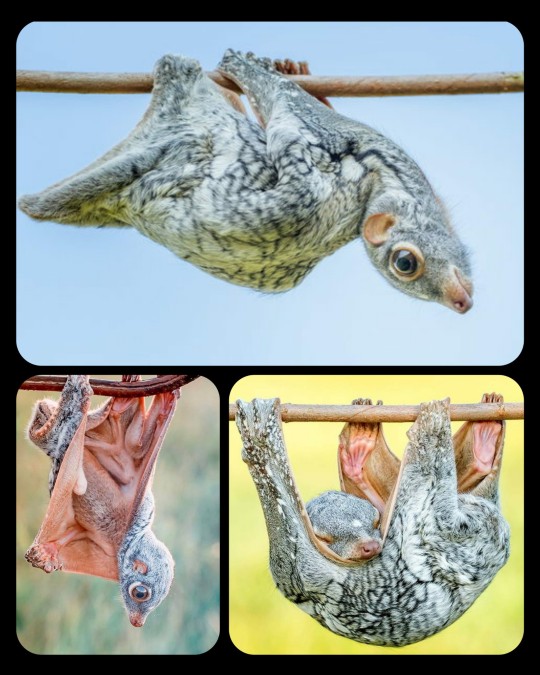
These critters are often referred to as "flying lemurs," though they aren't actual lemurs. Genetic studies have indicated that they are among the closest living relatives of primates, occupying a sister group.

Colugos are native to the tropical rainforests of Southeast Asia, where they are traditionally divided into two extant species: the Philippine flying lemur (Cynocephalus volans), which resides in the Southern Philippines, and the Sunda flying lemur (Galeopterus variegatus), which can be found in parts of Vietnam, Laos, Cambodia, Thailand, Myanmar, Malaysia, and Indonesia.
The fur-covered membrane that stretches across the colugo's body is known as a patagium; a similar membrane can be found in other gliding mammals (e.g. flying squirrels, sugar gliders, mahogany gliders, etc.) but the patagium of the colugo is uniquely extensive, surrounding almost all of the animal's body margin and stretching even between the tail and hind legs.
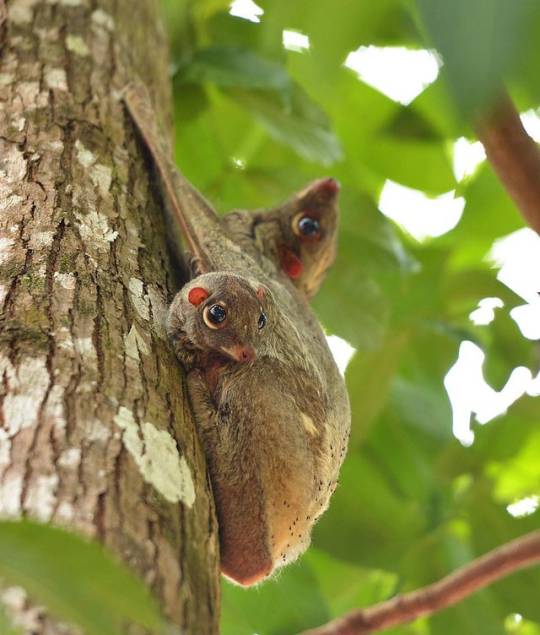
When they are not actively gliding, female colugos often pull their tails up against their bellies, effectively curling the patagium into a pouch in which they can carry/protect their young. When gliding, however, the mother must fully extend her patagium, meaning that she has to unfold the pouch and allow the baby to curl itself around her torso (and hold on tight) befor she can begin gliding.
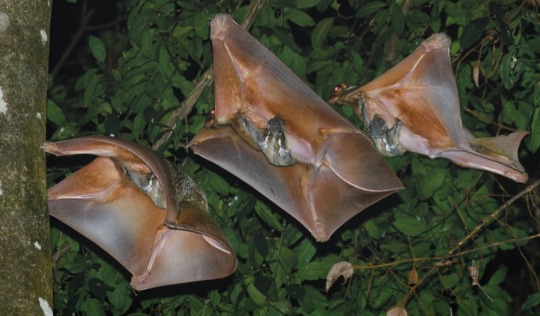
Colugos have a more extensive patagium (and therefore possess more "wing space") compared to other gliding mammals, which enables them to glide much further. There is at least one documented case in which a Sunda colugo was observed gliding across a distance of 145 meters -- nearly the length of three Olympic-sized swimming pools. Another study also indicates that this species is able to glide a total distance of 1,342 meters per night (and can climb a total of 320 meters up into the trees in order to do this).
These critters also have extremely strong claws, and the soles of their feet are able to mimic suction-cups to help them maintain a tight grip on tree trunks and branches. Colugos are most active at night, and they are strictly herbivorous, feeding only on young tree leaves.
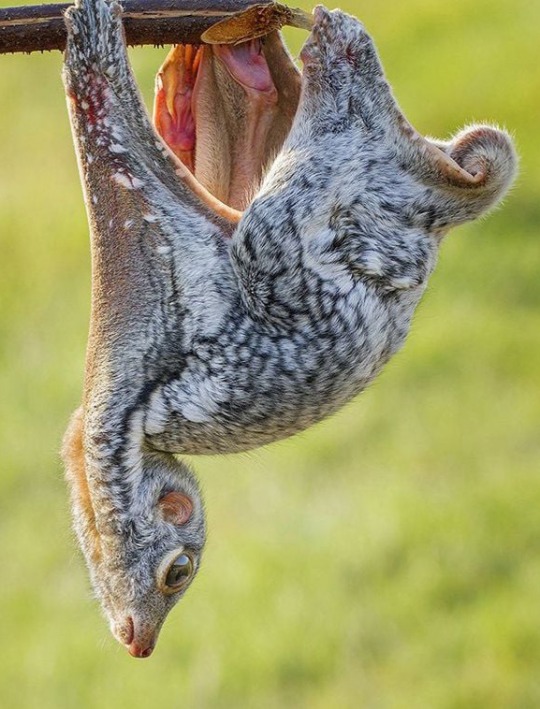
I don't normally feature mammals on my blog, but this one in particular seemed too heartbreakingly adorable and too weird for me to ignore. I mean, look -- it's like a tiny dinosaur wrapped in a Snuggie!
Sources & More Info:
Science News: On a cool night in Malaysia, scientists track mysterious colugos across the treetops
Animal Diversity Web: Galeopterus variegates (the Sunda flying lemur)
BioMed Central Journal of Biology: Colugos -- obscure mammals glide into the evolutionary limelight
World Wildlife Fund: Flying Lemurs
National Geographic: Why do flying lemurs glide?
Encyclopedia Britannica: Flying Lemur
Animal Diversity Web: Cynocephalus volans (the Philippine flying lemur)
#animals#nature is weird#science#biology#zoology#flying lemurs#gliding mammals#cute#weird animals#sunda#nature#colugo#these#guys#probably#give#the#very#best#hugs
618 notes
·
View notes
Photo

Source details and larger version.
39 notes
·
View notes
Text

Taxidermy Philippine colugo with young
By: Unknown photographer
From: Handbuch der Biologie der Wirbeltiere
1913
54 notes
·
View notes
Photo

Colugo (Dermoptère)
Didasteph
107 notes
·
View notes
Text

A mother and baby Sunda colugo, (Galeopterus variegatus). (Hi-Res).
#baby#babies#colugo#colugos#sunda colugo#flying lemur#flying lemurs#galeopterus#galeopterus variegatus#cynocephalidae#animal#animals#baby animal#baby animals#arboreal#nature#singapore
32 notes
·
View notes
Photo
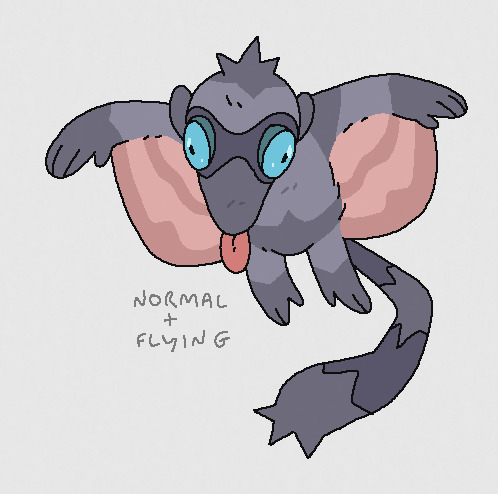

colugo+swordfish
don’t love these, they’re fine but they feel pretty route one (hehe) in terms of the idea, so consider them as loose scraps
72 notes
·
View notes
Text
Qui connaît existe-t-il vraiment ???
Colugo, a mammal that looks like a bat, gliding Lemur He lives on the island of Borneo and in the forests of Southeast Asia
8 notes
·
View notes
Text
Round 1 Match 63


Colugo: "when they poop, they flip up their tails onto their back, but it looks like they literally turned themselves inside out since they're hairless on their ventral side."
Sunfish: "Big rice cake :)"
59 notes
·
View notes
Text

I can't believe this animal actually exists
15 notes
·
View notes
Text
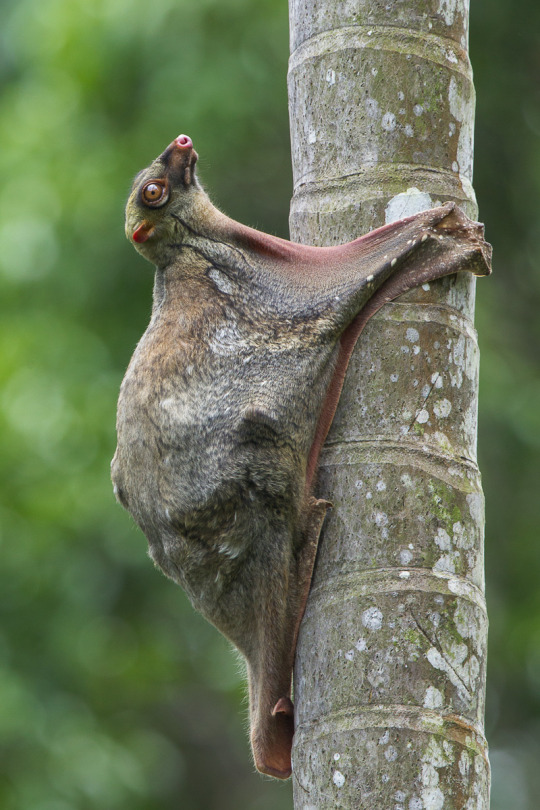
Sunda flying lemur (Galeopterus variegatus)
Not a lemur at all, this nocturnal glider is actually the closest living relative of primates. Also called the Sunda colugo, it is found in the tropical forests of Southeast Asia, including the Malaysian peninsula and the islands of Sumatra and Borneo. It eats leaves, flowers, fruit, and sap. Although it can’t technically fly, and its extensive skin membrane certainly looks awkward, it is one of the best gliders in the animal kingdom!
47 notes
·
View notes
Text
Being an adult is wild because you’ve been around for a while, you’ve watched a lot of David Attenborough, you think you know basically what an animal should look like right? And then someone drops a picture of this in front of you like what?

67 notes
·
View notes
Photo




Asymmetrical panspermic marsupial prosimians, with apologies to Peter Schouten.
13 notes
·
View notes
Text

I'm doing a little project over the month of March where I draw an animal with a 4 colour palette each day of the month.
March 18th is a little colugo.
3 notes
·
View notes